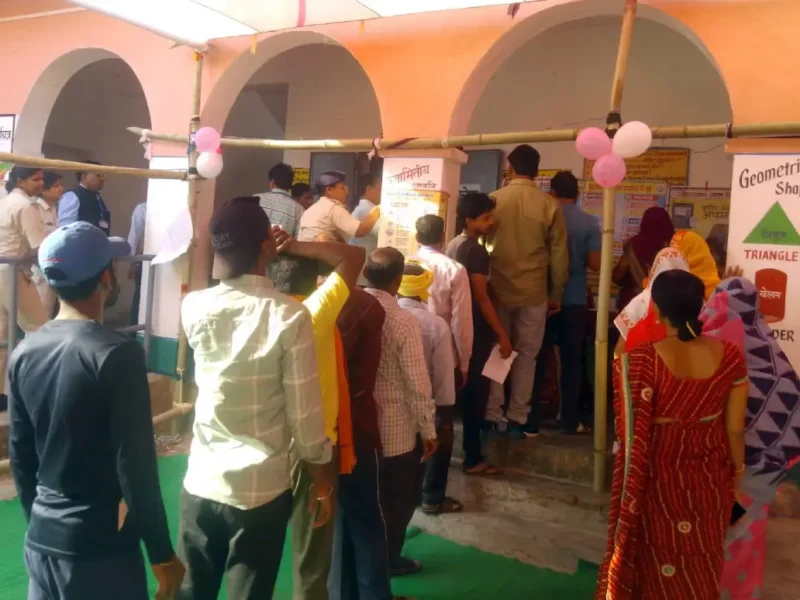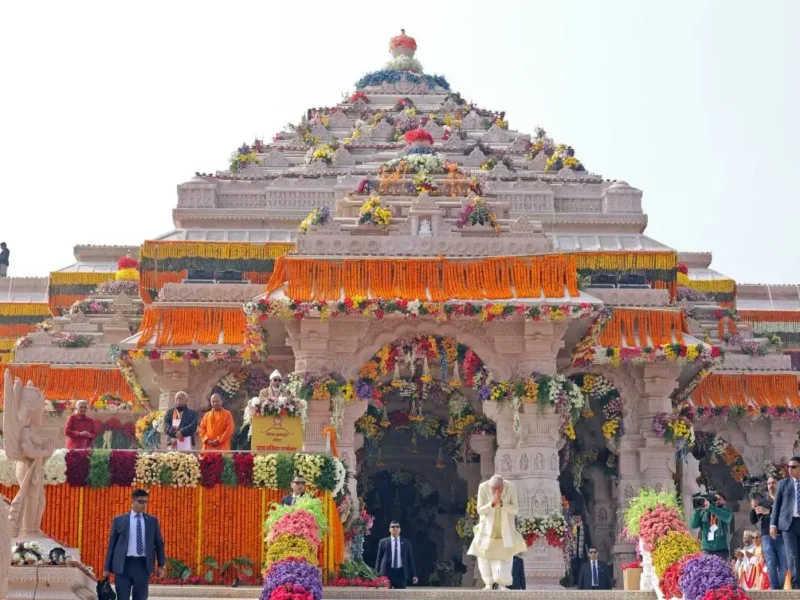
Diverse Indian Subcontinent Is Conducive For Multipolar World
From Dr. Sawraj Singh, Patiala, Punjab
If we take a bird’s eye view of the Indian subcontinent, one thing strikes us as its main feature: Diversity. This region has developed as a geographically, historically, culturally, and economically diverse region.
Even the geographical structure of the Indian subcontinent started with diversity. First, it was not a part of Asia. About 150 million years ago, this region separated from the African continent and started moving towards Asia. About 55 million years ago, it joined the Asian continent. The Himalayan Mountains are situated where the two land masses joined. The Himalayan Mountains form the northern border of the Indian subcontinent and separate it from China. The Indian Ocean is in the south of the region. In the west, the Hindukush Mountains separate it from Afghanistan, which is considered a part of Central Asia. In the east, the Arakan Mountains separate it from Southeast Asia.
Sometimes, we call the region South Asia. However, there is a difference. The Indian subcontinent includes the countries India, Pakistan, Bangladesh, Nepal, Bhutan, and Sri Lanka. South Asia also includes Afghanistan. Even though the Hindukush Mountains separate Afghanistan from the Indian Subcontinent, yet Afghanistan has been integrated with this region historically, culturally, and economically. In the great epic Mahabharata, Gandhari, the mother of the Kaurvas, was from Gandhar (modern-day Kandahar in Afghanistan).
Historically, the Indian subcontinent had relations with adjoining regions of Central Asia, China, and Southeast Asia. By sea, the region is related to the rest of the world. Because of these relations, different civilizations influenced the region to develop a distinct civilization of the subcontinent, which is a confluence of many cultures. We should understand the difference between civilization and culture. Civilization is a larger entity of culture.
The Indian subcontinent had very interesting religious interactions with the other regions. Two major religions, Hinduism, and Buddhism, went outside of the region while two major religions, Christianity, and Islam, came into the region from outside. Each of these religions interacted in a different geographical direction. Hinduism traveled east to Southeast Asia. Even today, we can see evidence of this. In Thailand, the King is called Rama. Cambodia has the renowned Angkor Wat Temples, which are Hindu Temples. In Indonesia, although an Islamic country, Ramleela is performed on the island of Bali. Buddhism spread primarily to the North, Tibet, China, Korea, and Japan, even though it also spread in other geographical directions. Christianity came from the South via oceanic routes, first to the southwestern coast of India. The first churches were built in this region. Islam primarily came through the west by the Khyber Pass.
Islam made a major impact on India. I feel the Bhakti movement in Hinduism started because of the influence of Islam. Hinduism, in turn, influenced Islam and led to the emergence of the Sufi movement. I feel the confluence of the Bhakti movement and the Sufi movement led to the emergence of Sikhism. Sri Guru Granth Sahib, the sacred Granth (holy book) of the Sikhs, contains Bhakti mat (writings of the Bhagats), Sufi mat (writings of the Sufis), and Gurmat (writings of the Gurus). Sri Guru Granth Sahib is the most elegant display of diversity and pluralism.
Whereas the Indian subcontinent evolved as an economic entity, at the same time it had developed economic relations in all four geographical directions. Since ancient times, the Indus Valley Civilization had trade with the Mesopotamian civilization by ships.
These ships sailed from the Indus River to the Arabian Sea, and then reached their destination. The old Silk Routes also passed through this region. The Sikh Gurus promoted trade with Central Asia, Middle East (West Asia) and Europe and brought prosperity. During the time of the Gurus, Amritsar became the main center for trade with Central Asia, Middle East, and Europe. Many people know that there was trade with Central Asia and the Middle East, but very few know that we also had trade with Europe. There are some very old homes in Russia in which the names of the owners are written in Gurmukhi (Punjabi script). These people traded with Russia. Dr. Igor Dmitrievich Serebryakov, the great scholar, academician, and lover of Punjabi culture, and who made the first Punjabi-Russian Dictionary, explained this to us when he stayed with us.
All these factors have made the Indian subcontinent a multiracial, multinational, multilingual, multicultural, and multireligious region. Whereas different cultures have evolved, there also evolved a common civilization. It can be also said that in this diverse region, common threads which can unite this region, have also evolved, such as a common civilization, common history, and common economy. It can also be said that the different cultures represent different colored flowers which have been threaded by a common thread in the form of a garland.
Taking into consideration the particularities of the Indian subcontinent, we should evolve a system in which the different cultures, races, nations, and religions experience their independent existence and flourish, as well as take advantage of the unity. We can call this a federal system. Sometimes, we ignore the ancient history of the region. However, the historical truth is, in ancient times, there was a federal system in this region. The different states (called Sanghs) enjoyed considerable freedom. The Sanghs used to meet on important issues, and this was called MahaSangh.
Whereas the particularities of the Indian subcontinent make it suitable for such a system, there are developments in the world that are promoting the emergence of a multipolar world order. In the last two centuries, western capitalists divided the world into nation-states because of their greed, exploitation, and monopoly. Many of these states were unnatural and are becoming irrelevant. It seems that these states will be replaced by cultural states that are based on naturally evolved cultures.
The war between Russia and Ukraine is not a war between the two countries. It is between the Western capitalists who want to maintain the current unipolar world and do not want it to be changed into a multipolar world. The existence of Western capitalism is at stake. The unpopular world order is unnatural because it is based on the concept of uniformity, making everybody the same, part of the consumer culture, which means negating naturally evolved diversity.
It is apparent that the particularities of the Indian subcontinent make it a supporter of a multipolar world. On one hand, the Western countries are trying to maintain a unipolar world order, on the other hand, Russia and China are trying to change the present system into a multipolar world. India’s natural alliance is with Russia and China, the side that is promoting a multipolar world.
Even though the Western countries control the present world institutions, mostly control the media, and want to prove that a majority of the world supports their stand and opposes Russia and China, the truth is that more than 80% of the world population does not support their stand. A vast majority of the people of the third world objectively support Russia and China’s stand and are in favor of the new multipolar world order.
The Indian subcontinent belongs to the third world. Therefore, the fundamental interests of the Indian people are in favor of a diverse world order (multipolar world), rather than a Western-controlled uniform order (unipolar world).
India should create a South Asian economic alliance and revive its trade with Central Asia, Middle East, and Europe by land. Such a trade made Punjab very prosperous in the past. Punjab can again become very prosperous. I believe that the future of Punjab as well as the rest of India will be very bright in a multipolar world. I also believe that the concept of a multipolar world originated in Punjab as it is based upon the philosophy of the Sikh Gurus, who were great advocates of pluralism and diversity.
(This submission has not been edited)




